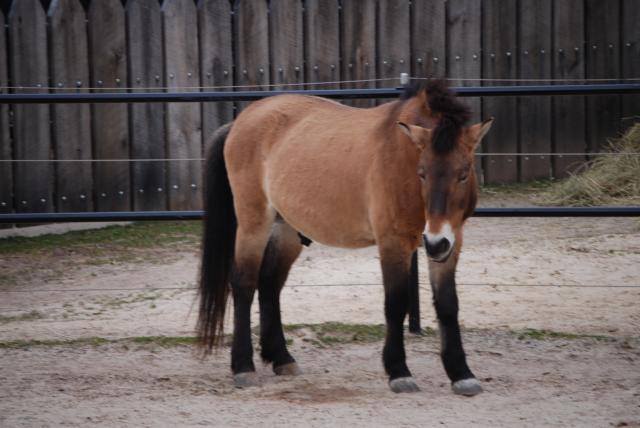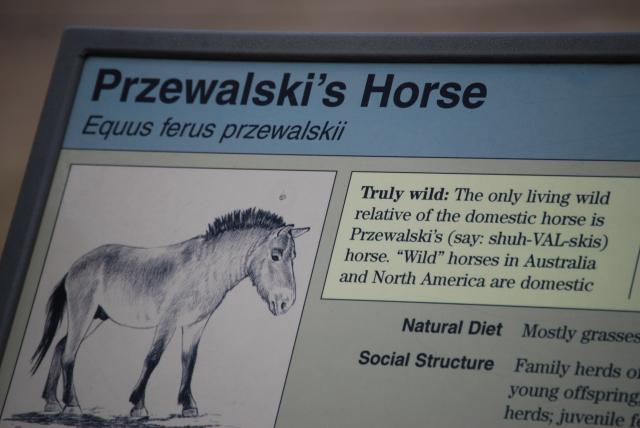| Home Horse Breeds | First Posted: June 27, 2013 Jan 21, 2020 | |
Horse Evolutionary Full Genome Sequence/Przewalski's Horse Image ©HorseHints.org
 ©HorseHints.org Przewalski's Horse (Equus ferus przewalskii or Equus caballus przewalskii, classification is debated), pronounced in English as (væl.ski), also known as the Asian Wild Horse or Mongolian Wild Horse, or Takhi, is the closest living wild relative of the domestic Horse. Most "wild" horses today, such as the American Mustang, are actually feral animals, horses that were once domesticated but escaped and reverted to an apparently wild status. The Przewalski's Horse, on the other hand, has never been successfully domesticated and remains a truly wild animal today. There were once several types of Equid that had never been successfully domesticated, including the Tarpan, Onager, and others. However, most have become extinct, with the Przewalski's Horse the only remaining truly wild horse in the world. Poliakov, who concluded that the animal was a wild horse species, gave it the official name Equus przewalskii (Poliakov 1881). However, authorities differ about the correct classification. Some hold it is a separate species, the last remnant of the wild horse Equus ferus, others hold it is a subspecies of Equus caballus. The question will only be answered with finality if or when the common ancestor from which domestic and Przewalski's horses diverged is determined. Although the Przewalski's horse has 66 chromosomes, compared to 64 in a domestic horse, the Przewalski's horse and the domestic horse are the only equids that cross-breed and produce fertile offspring, possessing 65 chromosomes. ..." It has recently come to light that the Przewalski's horse, recently brought back from the brink of extinction in Mongolia, is truly the last remaining wild horse. A specimen of a Przewalski's horse was found in the Canadian Arctic permafrost. This specimen was found to be more than one half a million years old. That DNA has been buried for 7,000 centuries! An article was published in Nature News-"First horses arose 4 million years ago" and released June 2013. With this finding the prevailing wisdom is moot. That ancient genome is 10 times as old as any recovered so far! This finding pushes back the equine lineage by approximately two million years. Also, from this finding, a host of evolutionary insights have come to light. Twenty-nine regions in the genome of domestic horses have been identified. This DNA shows that there is statistical evidence meaning that varient genes in these regions were favored as horses became domesticated. The researchers will have to carefully determine which of these genes targeted selection. Also significent in this new discovery of horse genome is that the Przewalski's horse shows no sign of inter-breeding with domestic horses. To read this article in its entirety: "First horses arose 4 million years ago" For More Information: My friend, Frank Harrell, has an emotional poem set to music which is quite moving and relevant to this article. Follow this link then click on the play song icon in the upper left: Equus Caballus, by Joel Nelson, Music, Wylie GustafsonRed List of Threatened Species/Equus ferus ssp. przewalskii Recalibrating Equus evolution using the genome sequence of an early Middle Pleistocene horse "DNA Buried 7,000Centuries Is Retrieved", New York Times International, Thursday, June 27, 2013 |